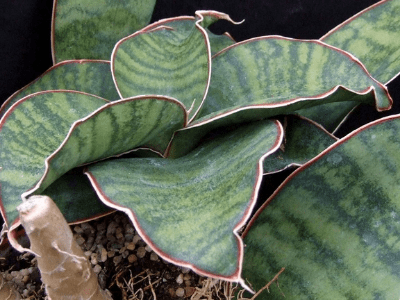
What Is Sansevieria It Self?
What is Sansevieria Hyacinthoides?
Sansevieria or (san-se-vi-ah) in the Lily family, also known as one of the world’s most popular plants.
On the basis of molecular phylogenetic studies Sansevieria has been included in the genus Dracaena…
…which is native to tropical Africa in particular Madagascar, and southern Asia.
The 70 or so species formerly placed in the genus have been known by many common names….
…..including mother-in-law’s tongue, devil’s tongue, jinn’s tongue, bow string hemp snake plant, and snake tongue.
According to the APG III classification system, Dracaena is a member of the family Asparagaceae…
…subfamily Nolinoideae (formerly the family Ruscaceae).
It has also been placed in the family Dracaenaceae. With its durability, the Sansevieria makes an excellent choice…
…for apartment dwellers who typically have difficulty with houseplants due to limited lighting.
They should take a good look at snake plants. As the most tolerant of all decorative plants…
…Sansevieria can survive the harshest growing conditions, abuse and neglect.
Simply put, sansevieria is a tough houseplant to kill. Snake plants are versatile, classic houseplants…
…with sword-like foliage.
The great thing about this plant is that it’s a great plant for forgetful gardeners…
…and it’s an excellent air purifier plant for indoor environments.
Despite being a resilient succulent that can grow from 6 inches to several feet, snake plants have a number of health benefits.
Household plants are often strategically placed for decoration and to maintain good feng shui.
But did you know that some of these same plants also have some health benefits?
You might be surprised to learn that snake plants bring both health benefits and beauty to your home.
Keep reading to discover the snake plant’s benefits, how to care for one, and how to keep it alive.
Before that here we have story from Sean about his story about having Sansevieria Hyacinthoides for the first time.
Let us hear Sean’s story
Sansevieria hyacinthoides is a type of plant that many people enjoy having in their houses…
…because it is both easy to care for and very beautiful.
This is my first time to have snake plant around me, especially in my house.
One great thing about this kind of plant is that it can survive with minimal maintenance…
….making it the perfect option if you are looking to hire someone to take care of your plants while you travel or have other obligations.
Another benefit from these types of plants being around your house is the fact that they give off oxygen at night…
…which means better breathing for anyone who suffers from allergies or respiratory problems.
The best time to purchase and maintain one of these plants would be during the cooler months…
.…when there isn’t too much sunlight coming through windows so as not to damage them and also it’s a good season to grow it!
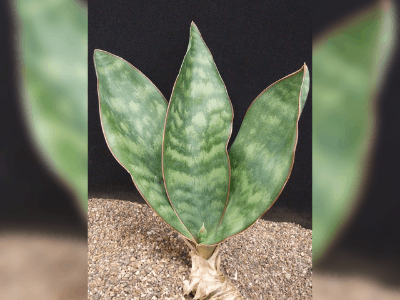
S. hyacinthoides was introduced to Florida around 1800 as an ornamental and fiber crop. Escaping cultivation and running wild in many locations in south Florida, it was deemed a nuisance in 1951.
Stephen H. Brown, Horticulture Agent Lee County Extension, Fort Myers, Florida
Here’s the main thing!
Why Choosing Sansevieria Hyacinthoides?
Is It worth?
Well, this plant is one of the famous houseplant that you will ever had. Recognizable and easy to care! Isnt that great?
The snake plant is native to Africa’s tropical western region, from Nigeria to Congo where she goes…
…by the scientific name Sansevieria trifasciata;
However, she goes by a variety of other names. She is most recognized as “snake plant,” or “mother-in-law’s tongue”…
…because of the shape and the sharpness of her leaves.
In Brazil, they call her “Espada de São Jorge,” because she is associated with the sword of Saint George…
…and in Japan, they call her “Tiger’s tail”. Like all famous people, the snake plant suffered criticism.
She was associated with bad luck. This is just a rumor. In fact, the plant was cherished in ancient times and was…
…believed to bring good luck in several countries.
In China, people who possessed this plant were subject to receiving eight virtue gifts from the Eight Gods:
which includes Prosperity, Beauty, Long Life, Intelligence, Health, Art, Strength, and Poetry.
This plant will attract positive energy and good luck to your home, giving you a feeling of well-being…
…and a feeling of security.
Around 1800, Sansevieria hyacinthoides was brought to Florida as an ornamental and fiber crop.
It became a pest in 1951 after escaping cultivation and running wild in several parts of south Florida.
In the Keys and the Ten Thousand Islands, it can be found in the understory of maritime hammocks.
Puerto Rico, the Virgin Islands, and Australia have all granted it citizenship. Snake plants reproduce by seed.
Because of its invasive nature, the plant is not recommended for landscape planting. It’s a hardy herb.
It thrives in containers indoors in conditions that would destroy most other plants.
The snake plant thrives in the sandy soils and warm climates of southern Florida.
It thrives in sandy soil and can be grown in full sun to partial shade.
Plants are difficult to control due to their tough leathery leaves and stout, extensive rhizomes…
….and manual removal may be needed. Herbicide applications can take 6 to 12 months to take effect…
…and follow-up treatments are often required.
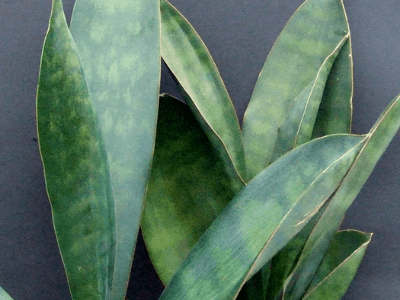
Next up…
Best Perks Of Having Sansevieria Hyacinthoides
In spite of their spiky, sculptural leaves and low-maintenance requirements…
….snake plants are one of the easiest plants to care for indoors.
Their survival depends on minimal attention and they’re easily adapted to new locations and conditions.
Knowing how to grow and maintain snake plants will ensure you keep them looking their spiky best.
Just follow these basic instructions and you’ll be successful in growing snake plants.
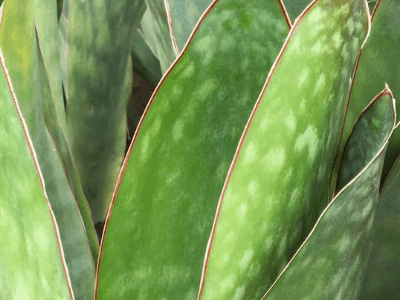
Next up…
Hard Though Plant That Ever Exist
The snake plant is very resistant to insect bites and humidity, and can go 2 to 3 weeks without being watered.
She prefers warmer climates as she was raised in extremely arid soils. Below 50°F can be dangerous.
Green beauty prefers to dry out before watering, so make sure to water it in moderation, especially during the winter.
It is the perfect plant for apartment dwellers because it does well in low light or dark areas…
…and can survive with a medium to indirect light.
Sansevieria Hyacinthoides (L.) Druce
So he have this varieties, lets we take a look at it first before diving deep to the technique guide and tips.
- Family: Ruscaceae
- Common names: mother-in-law’s tongue, piles root, bowstring hemp (Eng.); skoonma-se-tong, aambeiwortel, haasoor (Afr.); kai, ghaiwortel (Khoi); isikholokotho (Xhosa, Zulu); isikwendle, isitokotoko (Zulu)
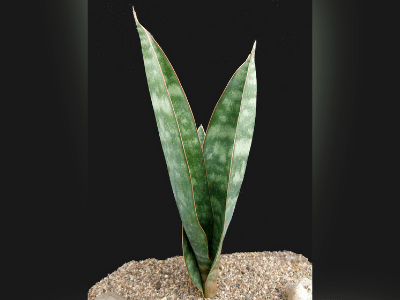
Description Of Sansevieria Hyacinthoides
Sansevieria hyacinthoides is a robust, evergreen, perennial herb, up to 600 mm high.
Its rhizomes are sturdy, fibrous and bright orange. Leaves grow in pairs of 5–12 in loose clusters…
…arising from the ground, ranging in size from 600 mm to 80 mm in length, dark green with paler markings, and the margins are red.
This plant has a 450-mm high inflorescence with many flowers. Sansevieria hyacinthoides flowers from September…
…to May, being stemless and white, cream-coloured, or greenish white in color.
They are highly fragrant and open at night. The berries are 8 mm in diameter, orange in color.
The tongue of mother-in-law may be confused with the Sansevieria Metallica, which is a sturdy plant that grows…
…to a height of up to 1,6 m. The giant sinevieria has a height of 2 or 3 leaves, ± 1 m, white and deep-channelled light green.
Its flowers have a flavor of caramel. It is naturally distributed in tropical Africa in northern Kwa Zulu-Natal Sand Forest.
Go on..
Conservation Status Sansevieria Hyacinthoides
Based on Raimondo et al. (2009), Sansevieria hyacinthoides is Red Listed as Least Concern (LC), as evaluated against the five IUCN criteria.
Distribution and Habitat of Sansevieria Hyacinthoides
Sansevieria hyacinthoides occur in the wild between shady arboreal rocks in the East Cape and in Mfumalanga…
… Swaziland, North-West Limpopo, Boston and Namibia. Hyacinthoides are found in Sansevieria naturally.
It also takes place on wooded banks and in kloofs.
Derivation of Name and Historical Aspects Sansevieria Hyacinthoides
A specific name, hyacinthoides, was suggested after the genus Sanseverino, named after Pietro Sanseverin…
…Prince of Bisignano, in whose garden near Naples the plants had been found growing.
Ecology
The leaves of Sansevieria hyacinthoides are browsed by game such as rhinoceros and antelope.
The rhizome is eaten by mole rats. The fibre from the leaves is utilised by weaver birds for building nests.
Keep reading…
Uses
Sansevieria hyacinthoides was used in medicine with rhizomes and leaves. The medication is famous for ear…
…earach and toothache treatment. Traditional treatments include hemorrhoids, ulcers, intestinal worms…
…stomach disorders and diarrhoea, as well as numerous conditions.
It is used as a calming charm in many cultures. The fiber can be used for string production, too.
Last but not least…
Growing Sansevieria hyacinthoides
A quick grower and drought-proof is Sansevieria hyacinthoides. It grows very quickly needs little care…
….so it is suitable for big gardens. The leaves are appealing. It can be planted in a rocky rock or as a solid floor….
…covering between the rocks. It prefers the sun or partial shade, with the addition of compost in either soil type.
Sparingly water. Water. The language of mother-in-law often works in the interior of a container well.
The seeds, cuttings or divisions of the big clumps can be easily propagated.
Sum Up
See having Snake plant is good choice for you to have! It’s cool, its famous, it’s easy to have and care!
What else do you need? In this pandemic time like this, is a good choice for you to have an new activity…
…and having snake plant is a good choice for you to have!
Conclusion
Last thing for sure. This plant need to be care carefully, remember plant need the “love” too.
Alright that’s all for today! Do you have any questions about all of this?
Or do you want to add some method for having and care Sansevieria Hyacinthoides around your house?
Let me know your recommendation from the comment below.
I hope you can now take care your snake carefully and grow it big!
Thanks for reading this article! Bye!

